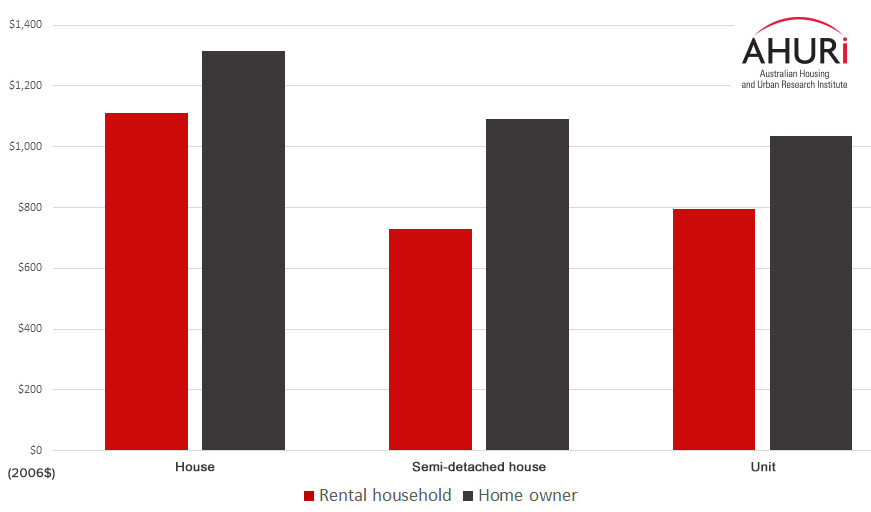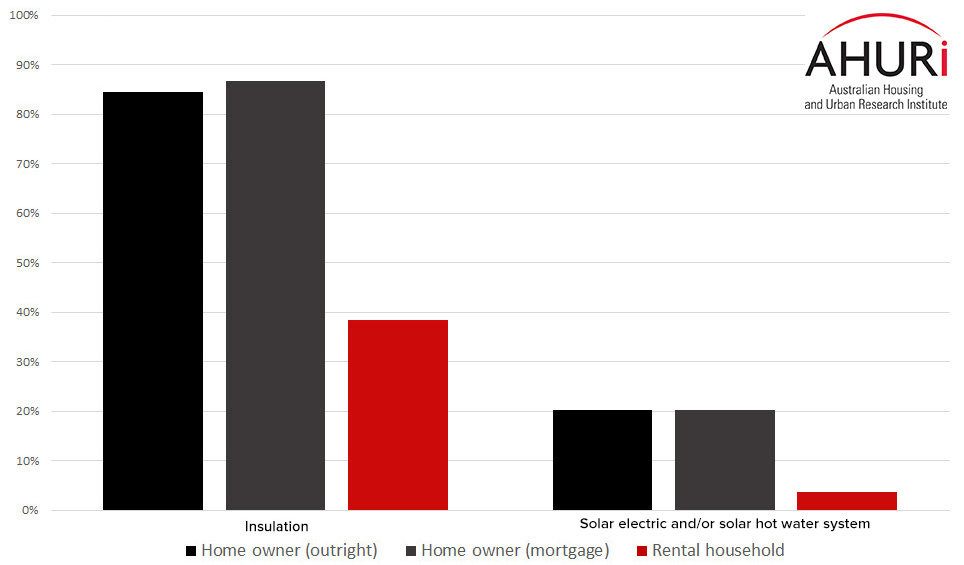Amidst concerns about rising energy costs for Australian households, a look at AHURI research published in 2010 brings to light interesting differences between the energy expenditure of home owners and renters. The report, which examined 2006 HILDA data, found that on average, home owners spent more on energy running costs than households renting a similar size home in the private rental market. Such an outcome may seem counter intuitive, as the issue of the ‘split incentive’ would be expected to come into play.
Figure 1: Annual average household energy costs (2006)

Source: Gabriel, M., Watson, P., Ong, R., Wood, G. and Wulff, M. (2010) The environmental sustainability of Australia's private rental housing stock, AHURI Final Report No. 159
What is the split incentive?
Split incentive describes the situation where the costs of improving a house’s energy efficiency (such as through insulation, solar heating and double glazing etc.) are borne by the landlord but the benefits are received by the tenant through reduced expenditure on energy. Since the landlord does not reap the immediate benefits of investment in any energy saving strategy, there is little financial incentive for them paying for improvements that lead to greater energy efficiency.
Comparing energy efficiency of owner-occupier and rental housing
As a consequence of the split incentive, relatively few rental properties feature energy saving devices such as insulation or more expensive solar panels.
Figure 2: Percentage of housing with energy efficient technology (2012)

Source: 2012 ABS Household Energy Consumption Survey
The 2012 ABS Household Energy Consumption Survey revealed that 84.5 per cent of home owners and 86.6 per cent of owners with a mortgage had insulation while only 38.5 per cent of households renting in the private market had insulation, and, not surprisingly, while 1 in 5 (20.2%) home owners and owners with a mortgage had a solar electric system and/or solar hot water system, only around 1 in 27 (3.7%) households renting in the private market had a solar electric system and/or solar hot water system. Considering the differences in the energy efficiency of owner-occupier and rental housing, one would expect tenants’ energy costs to be higher, but as the research shows, this is not the case.
So why are home owners still spending more than renters on energy?
Household energy use is driven more by demographic differences between home owners and renters.
Table 1: Demographic comparison of home owners and private rents (all in 2006$)
| Home owners/buyers | Private renters | |
|---|---|---|
| Average age | 54.6 years | 40 years |
| Average annual expenditure on electrical appliances | $1,416 | $1,076 |
| Average annual gross household equivalised income | $42,323 | $37,944 |
| Mean net worth | $598,274 | $79,600 |
| Mean non-housing net worth | $268,292 | $78,565 |
Source: Gabriel, M., Watson, P., Ong, R., Wood, G. and Wulff, M. (2010) The environmental sustainability of Australia's private rental housing stock, AHURI Final Report No. 159
Home owners/buyers are significantly older, and as people age they ‘become more averse to extreme temperatures’ and are therefore likely to spend more on heating or cooling their home to cope with weather events.

